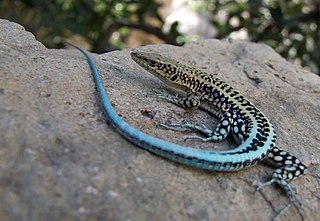 W
WThe Anatolian lizard is a species of lizard endemic to Iran, Iraq, Syria and Turkey.
 W
WAsaccus granularis is a species of leaf-toed gecko endemic to Iran. The specific epithet refers to the granular scales on the back of this lizard. It is only known from the type locality in Lorestan Province, Iran. It was found in a mountainous area with open oak forests, on rocky outcrops and under large boulders.
 W
WAsaccus nasrullahi, Nasrullah's leaf-toed gecko, is a species of gecko in the family Phyllodactylidae. The species is endemic to Iran. The specific name nasrullahi was chosen in honor of Iranian herpetologist Nasrullah Rastegar-Pouyani, "in recognition of his contribution to the knowledge of the herpetology of Iran, including the genus Asaccus".
 W
WBufotes luristanicus, the Lorestan earless toad or Lorestan toad, is a species of toad in the family Bufonidae. It is endemic to the Zagros Mountains in Iran and occurs at an altitude of 350–1,300 m (1,150–4,270 ft), most often near rocky outcrops or freshwater ponds, which it also uses for breeding. Little is known about this species, but it is not considered threatened overall. Some local populations may be threatened by habitat loss from human activities or drought.
 W
WCapoeta razii, is a newly described species of freshwater cyprinid fish occurring mainly in southern Caspian Sea basin, Iran. This species was mistakenly reported by many authors as Capoeta gracilis in northern Iranian regions. It was first reported to be different from Capoeta gracilis by Levin et al. (2012).
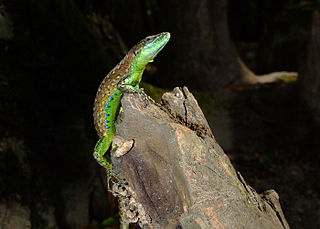 W
WDarevskia kamii is a lizard species in the genus Darevskia. It is endemic to Iran.
 W
WDarevskia kopetdaghica is a lizard species in the genus Darevskia. It is endemic to Iran.
 W
WDarevskia schaekeli is a lizard species in the genus Darevskia. It is endemic to Iran.
 W
WEremias kavirensis is a large Eremias lizard known only from Kavir National Park, Iran. It has a snout–vent length of up to 83 millimetres (3.3 in); the background colour of the dorsum is sandy, yellowish-brown, and broken by grey transverse bars that are sometimes bordered with darker brown margins. There are dark brown spots on the head that are larger on the posterior head scales. The dorsal side of the limbs has enlarged light spots that, on the tibia especially, merge into semi-transverse stripes.
 W
WEremias papenfussi is a species of lizard endemic to Iran.
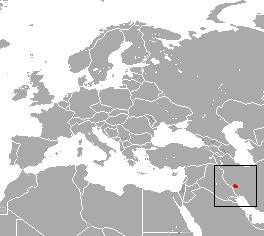 W
WThe Iranian shrew is a species of mammal in the family Soricidae. It is endemic to Iran. It is threatened by habitat loss.
 W
WThe Iranian worm snake is a species of snake in the family Typhlopidae. The species is endemic to Iran.
 W
WLycosa aragogi is a species of the araneomorph spider family Lycosidae endemic to Kerman Province, Iran. The female holotype measured 26 mm,, with two black and three white stripes of setae on its cephalothorax, black setae on its chelicerae, and scattered dots and patterns of black and white setae on its abdomen.
 W
WThe Maranjab snake skink is a species of skink, a lizard in the family Scincidae. It can be found in north-east of Kashan, Dasht-e Kavir, Iran. From snout to vent 95 mm, tail 81 mm.
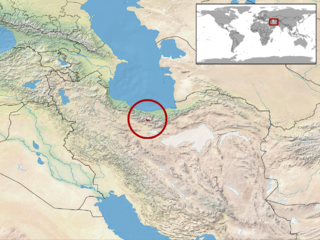 W
WMontivipera latifii is a species of venomous snake in the subfamily Viperinae of the family Viperidae. The species is endemic to Iran. There are no subspecies that are recognized as being valid.
 W
WNeurergus kaiseri, the Luristan newt, Kaiser's mountain newt, Kaiser's spotted newt or emperor spotted newt, is a species of very colourful salamander in the family Salamandridae. It is endemic to the southern Zagros Mountains in Iran where it is known from just four streams. Populations of this newt have been declining and the International Union for Conservation of Nature has rated it as "vulnerable". A captive breeding programme has been established in several zoos.
 W
WThe Persepolis angular-toed gecko is a species of gecko, a lizard in the family Gekkonidae. The species is endemic to Iran.
 W
WThe Persian brook salamander or Persian mountain salamander is a species of salamander in the family Hynobiidae found in Iran and possibly Azerbaijan. Its natural habitats are rivers, inland karsts, and caves. It is threatened by habitat loss.
 W
WPhrynocephalus ananjevae is a species of agamid lizard endemic to the Zagros Mountains in Iran. The specific epithet honors Natalia Ananjeva of the Zoological Institute in St. Petersburg, Russia for her contribution to herpetological research of the family Agamidae and Phrynocephalus in particular.
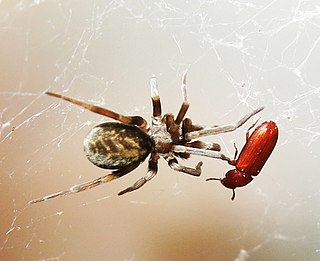 W
WPritha garfieldi is a species of araneomorph spiders in the family Filistatidae.
 W
WPseudohadena magnitudinis is a moth of the family Noctuidae which is endemic to Iran.
 W
WRana pseudodalmatina is a species of frog in the family Ranidae endemic to Iran.
 W
WThe Persian ratsnake is a species of medium-sized nonvenomous snake in the family Colubridae. The species is endemic to Western Asia.
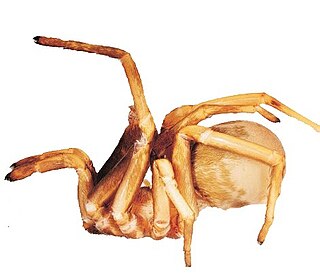 W
WSahastata sinuspersica is a species of the araneomorph spider family Filistatidae.
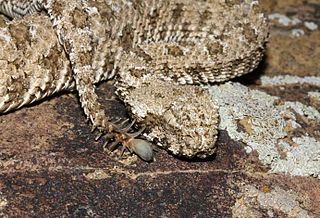 W
WThe spider-tailed horned viper is a species of viper, a venomous snake in the family Viperidae. The species is endemic to western Iran, and was originally described in 2006. The head looks very similar to that of other Pseudocerastes species in the region, but the spider-tailed horned viper has a unique tail that has a bulb-like end that is bordered by long drooping scales that give it the appearance of a spider. The tail tip is waved around and used to lure insectivorous birds to within striking range.
 W
WZaitunia akhanii is a species of the araneomorph spider family Filistatidae.